The gig economy encompasses a variety of alternative employment arrangements, including independent contractors, online platform employees, contract company workers, on-call workers, and temporary workers.
In the United States, the gig economy has been on the rise for decades, impacting the country’s economy. Americans are increasingly supporting themselves — in part or whole — through self-employment.
If you are an aspiring gig economy worker, these essential gig economy statistics will help you know more about the industry before you get started.
General Gig Economy Stats
To begin with, let’s try to get the big picture of where the gig economy is at the moment. This will help you understand the market in which you could work.
1. 16% of Americans have ever earned money through an online gig platform, as per a recent survey. (Pew Research Center)
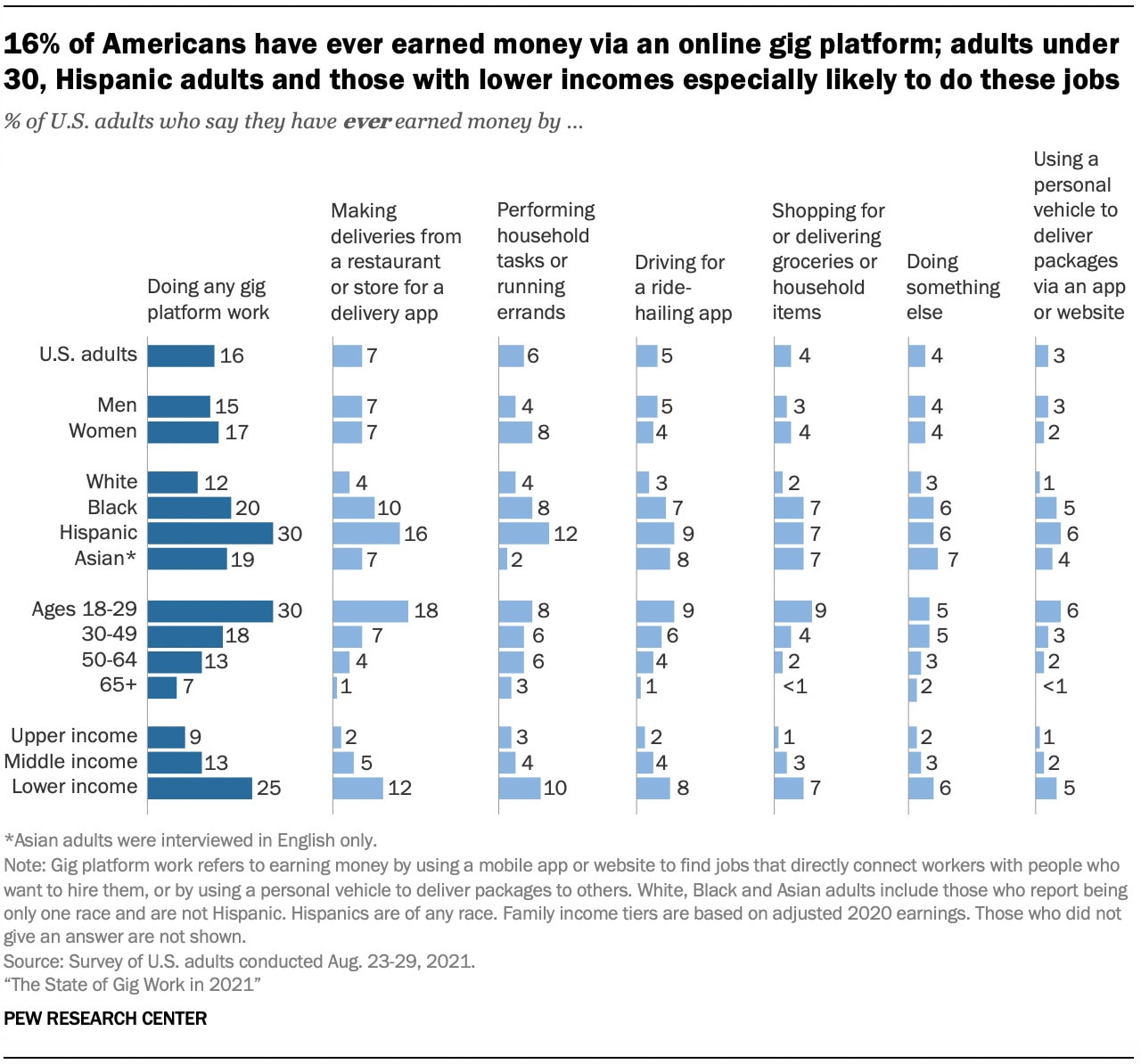
2. 3 in 10 among 18 to 29-year-olds have earned money through an online gig platform, while only 18% among those ages 30 to 49. (Pew Research Center)
3. Finances and job flexibility are the key reasons people turned to gig platform work, as per a recent survey. (Pew Research Center)

4. The estimated size of the global gig economy was $347 billion in 2021. (Brodmin)
5. There are 51.1 million gig workers as of 2021. (MBO Partners)
6. As of 2021, there are 17 million full-time gig workers. (MBO Partners)
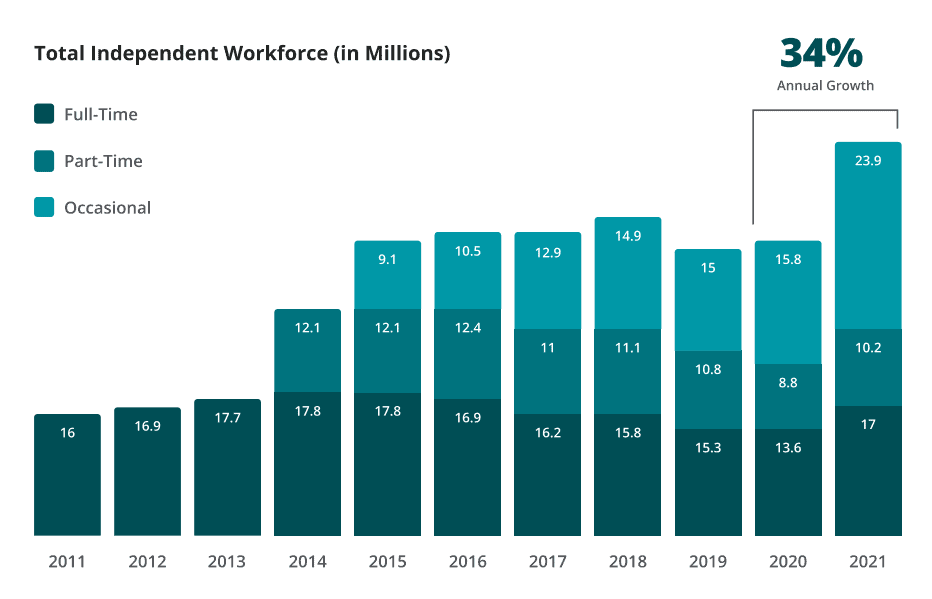
7. On average, newly independent workers in 2021 were also more likely to be female, with 55% identifying as so. (MBO Partners)
8. 3.8 million gig economy workers reported earning over $100k annually. (MBO Partners)
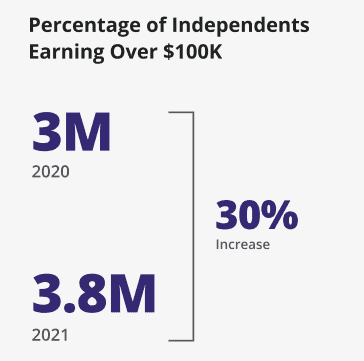
9. Freelancers contributed $1.3 trillion to the U.S. economy in annual earnings. (Freelance Forward Economist Report)
10. 44% of freelancers say they earn more freelancing than with a traditional job in 2021. (Freelance Forward Economist Report)
11. 12% of the US workforce started freelancing due to the consequences of the COVID-19 pandemic. (Upwork)
12. 36% of US workers are freelancing, per Upwork’s report. (Upwork)
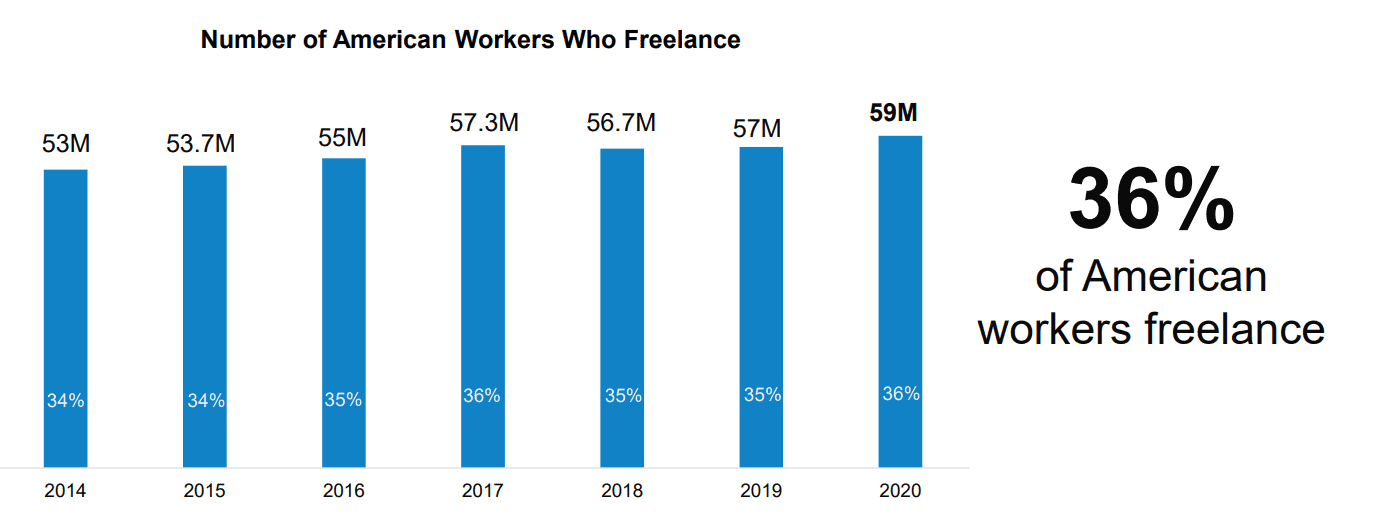
13. Gig economy workers spend a weekly 11 to 30 hours working. (Statista)
Stats on The Kind of Work Gig Economy Workers Do
Let’s dig a little deeper after getting a sense of what the gig economy is all about. Here’s all about the kind of work gig economy workers do and the pay they get.
These gig work statistics should help you out!
1. According to a recent report, 53% of all freelancers provided skilled services such as computer programming, marketing, IT, and business consulting in 2021. (Freelance Forward Economist Report)
2. 44% of freelancers say they earn more freelancing than with a traditional job in 2021. (Freelance Forward Economist Report)
3. The highest-paid gig economy job is project management, spending $28 per hour. (Payoneer)
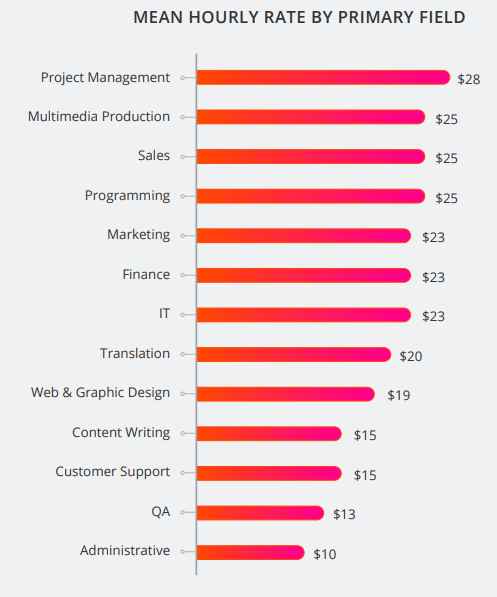
4. Web and graphics design is the most popular work in the gig economy, done by 30% of workers. (Payoneer)
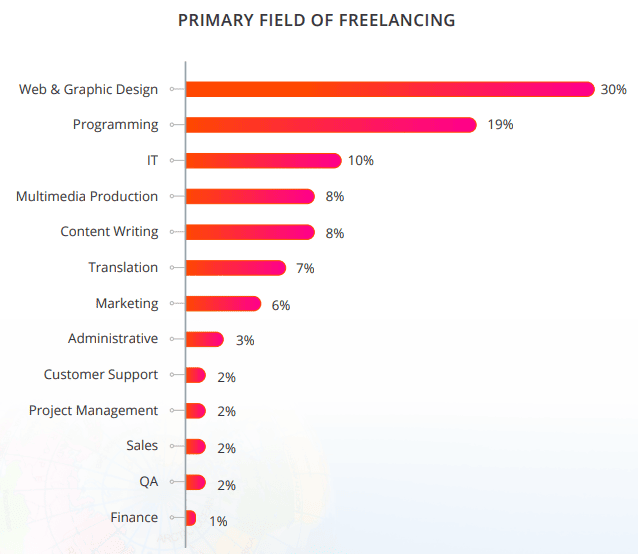
Job Security And Satisfaction Among Gig Economy Workers
Are gig economy workers happier than full-time employees? Or are they stressed out? Let’s find out.
1. 37% of those who have ever earned money in the gig economy said they had been treated rudely, at least sometimes, while doing these jobs. (Pew Research Center)
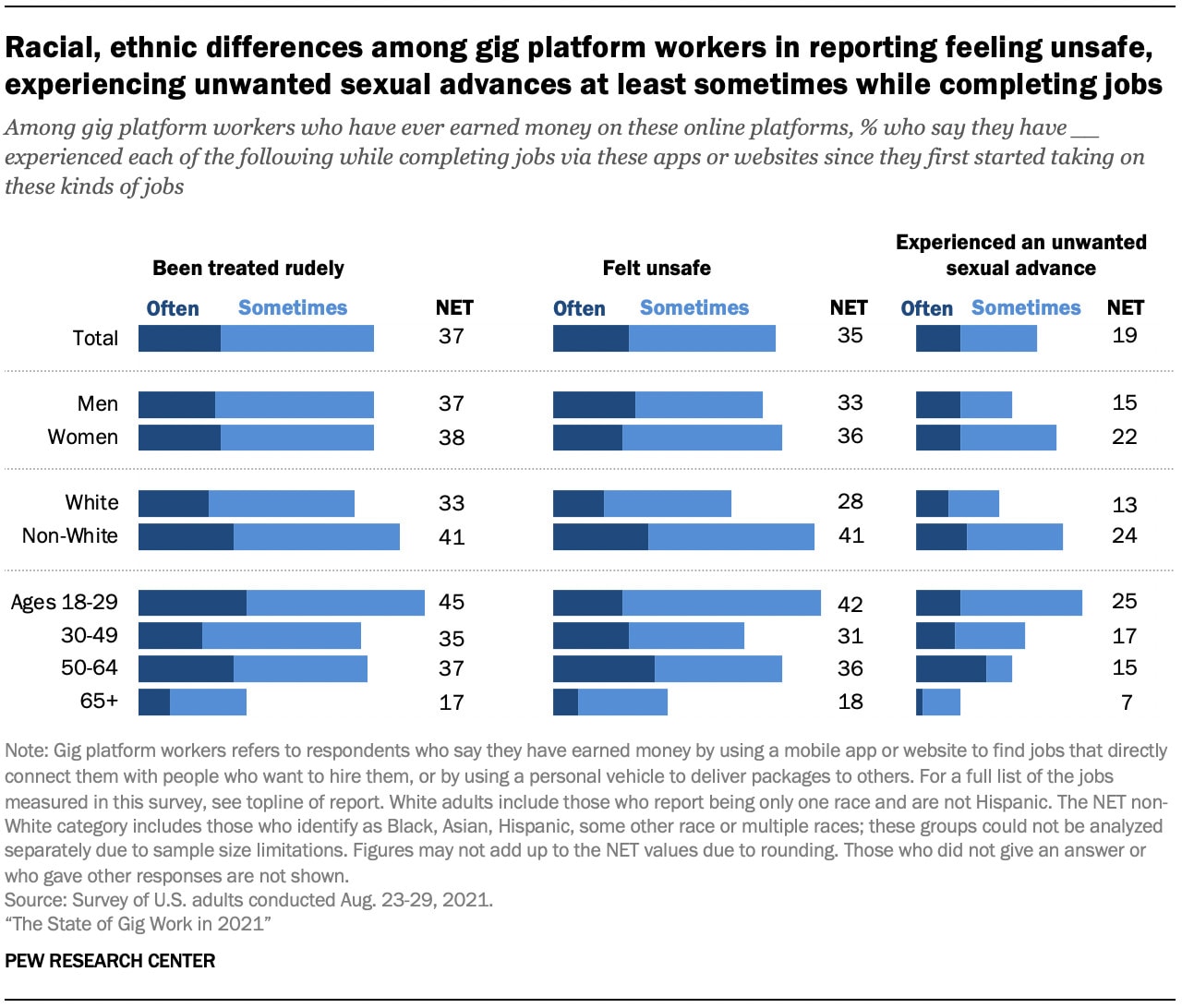
2. Of all the current or recent gig platform workers, 64% think companies that run these platforms are fair regarding their pay. (Pew Research Center)
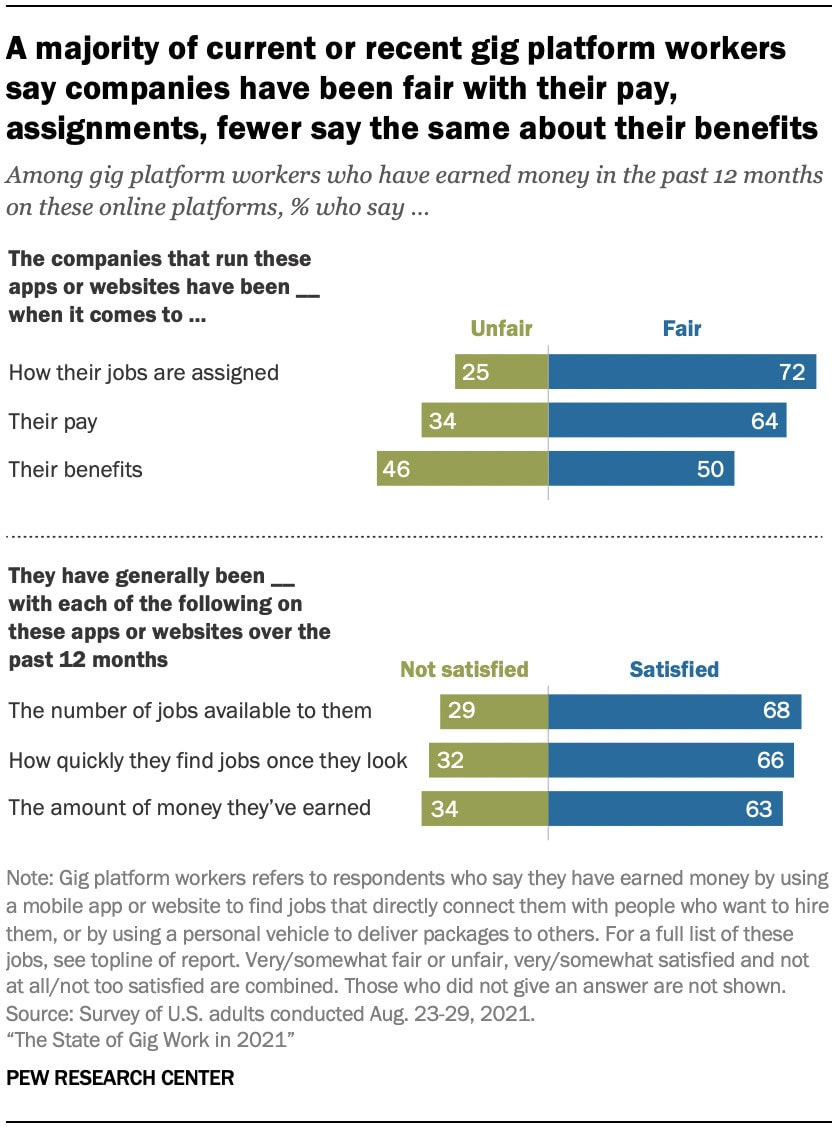
3. 79% of full-time independent workers said they were happier working independently than at a traditional job. (Brodmin)
4. 45% of full-time gig workers have a high Economic Anxiety Index score. (Brodmin)
5. 54% of gig workers do not need employer-based benefits. (Brodmin)
6. 63% of independent workers said that working independently was their choice completely. (MBO Partners)
7. 68% of gig economy workers reported feeling more secure than if they had been in a traditional job. (MBO Partners)
 How Do Employers and Companies Look at The Gig Economy: Stats and Facts
How Do Employers and Companies Look at The Gig Economy: Stats and Facts
We just saw what gig economy workers thought of their work life and concluded that many are satisfied with their new independent work style. Now, let us also understand how employers feel about it, and if they look forward to hiring gig economy workers.
1. 59% of hiring managers report that freelancers are used for the unique knowledge they can bring. (Statista)
2. As of 2020, 80% of companies employ freelancers, among others, to get work done. (PYMNTS)
Cons of The Gig Economy
The gig economy, while providing flexibility, involves some cons. Let’s have a look at them.
1. Compared to about 70 percent of full-time workers whose employer provides health insurance, gig economy workers generally do not get insurance. (Statista)
2. 67% of gig economy workers are concerned they are not paid a fair rate. (Statista)
3. An economic downturn in the next few years concerns 72% of freelancers; it is one of the negatives of working on your own. (Statista)
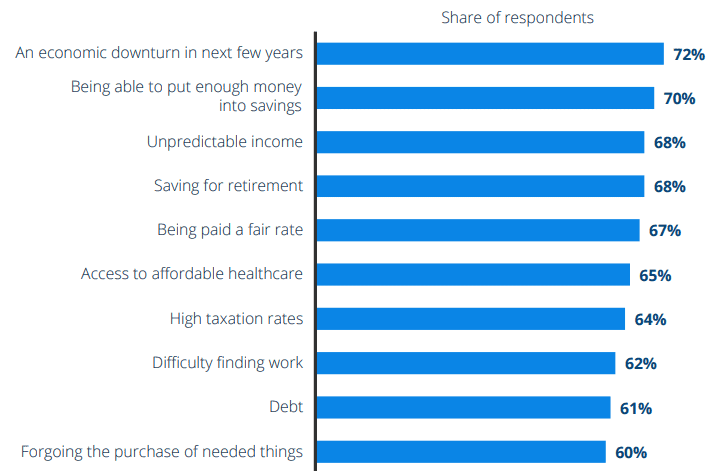
4. Nearly one-quarter of gig workers’ emergency savings would not last one month. (Statista)
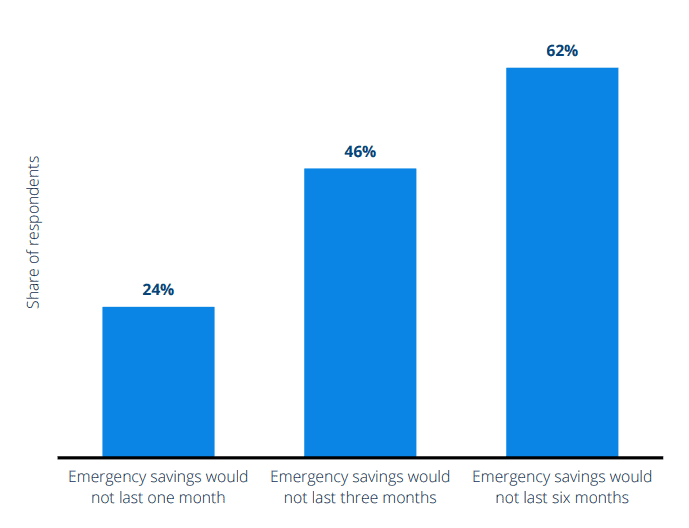
5. As opposed to employees with a traditional job as their primary source of income, 50% of gig economy workers struggle to make ends meet, as per a recent survey. (Wonolo)
6. 30% of freelancers have, at some point, not received payment for the work they’ve done, gig workers say in a recent survey. (Dinghy)
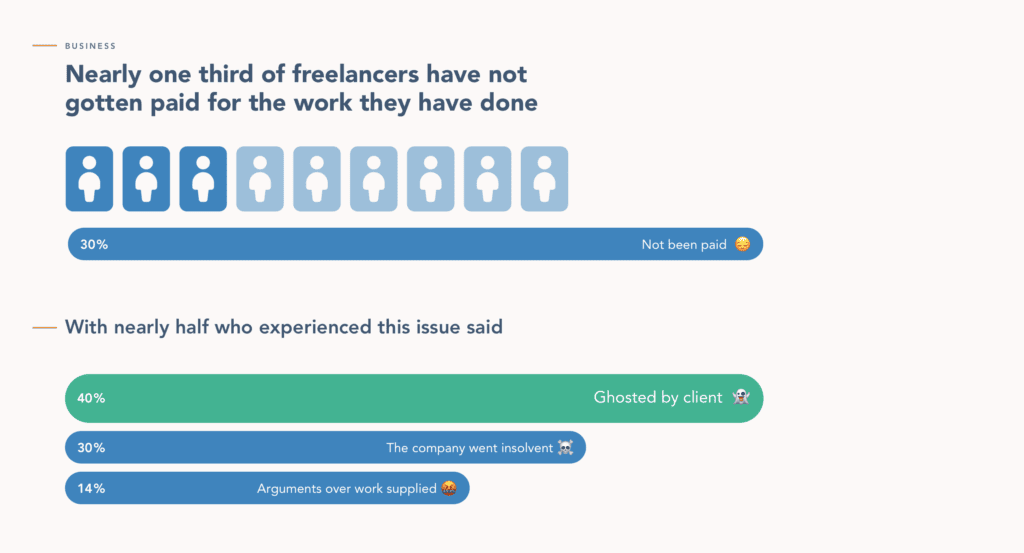
The Future of Gig Economy: Stats
Now we have a comprehensive feel of what the gig economy represents and what you can expect if you join it now.
However, as a potentially aspiring gig economy worker, you might also be curious about what comes in the future, and to help you understand just that, here are some stats on where the gig economy is headed.
1. 56% of gig economy workers said they wanted to remain solopreneurs, while 18% said they plan to build a more significant business. (MBO Partners)
2. 17% of traditional workers said they would definitely or probably become gig economy workers over the next two to three years. (MBO Partners)
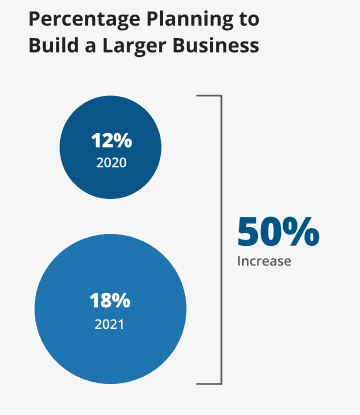
3. The American gig economy is estimated to reach $455.2 billion in valuation by 2023. (Statista)
4. The number of freelancers in the US is expected to rise to 90 million by 2028. (Statista)
Final Thoughts
The gig economy is expanding, and the potential exists for it to transform how we work and the way we perceive work itself. The development of gig economy platforms has enabled employees to take control of their professional lives and finances, enabling them to work on their terms.
However, the gig economy is difficult since employees must pay their bills, insurance, and safeguards. Many often have primary or secondary jobs to make ends meet.
So, to participate in the gig economy, you must think carefully before diving into the unknown.
